Ten delicious Spanish dishes you must try before you die
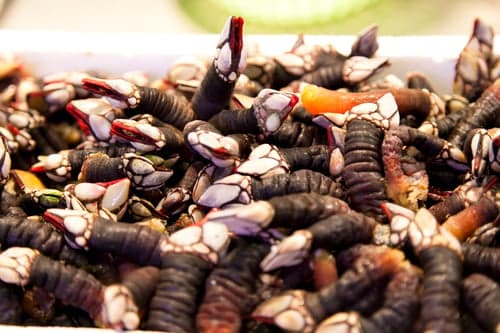
If you thought Spanish food was all paella and pinchos then think again. Get ready as The Local Spain takes you on a mouth-watering tour of some of the country's lesser known but equally fabulous culinary highlights.
Percebes
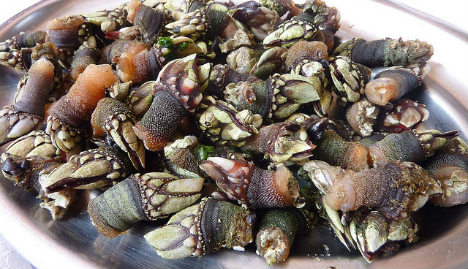
Photo: Fotero/Flickr
Barnacle collectors in Galicia brave the crashing waves of the Atlantic in winter months and risk their lives to pick these alien-looking crustaceans from the rocks. They're hard to harvest, outrageously expensive (sometimes almost €300 ($374) per kilo), incredibly ugly... and unbelievably delicious.
Calçots
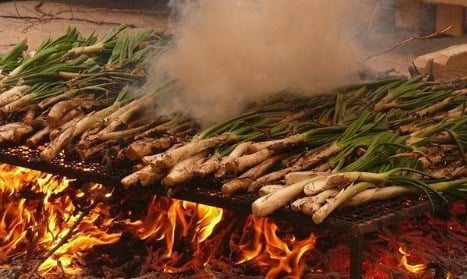
Photo: Joan Grifols/Flickr
Eating onions may not sound exotic but the Catalan calçotada feast is a unique food experience. The sweet onions are first grilled over flames, stripped of their charred outer layers and dipped into salbitxada, a rich variety of romesco sauce with nuts, peppers, garlic and tomatoes. You'll need a plastic bib and a big appetite to get through this messy, unmissable meal.
Coques de llardons (Pork and sugar flatbreads)

Photo: Slastic/Wikimedia
Meat and sugar? This unlikely combination is a traditional favourite in Catalonia and once you try it you'll be a believer too. Crispy flatbreads are topped with pine nuts and fried cubes of pork fat or crackling then sprinkled with sugar to make a high-calorie but mouth-watering combination.
Cochinillo
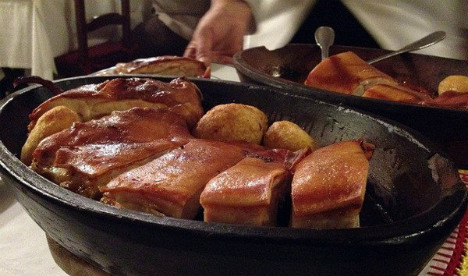
Photo: LWYang/Flickr
The sight of dead baby pigs (from two - to six -weeks old) in market stalls or rotating on spits in Castille-Leon has turned more than one person to vegetarianism but the taste of the finished dish is a meaty treat of tender flesh and perfect, crispy skin flavoured with smoke from traditional wood-fired ovens.
Bacalao (Salt cod)
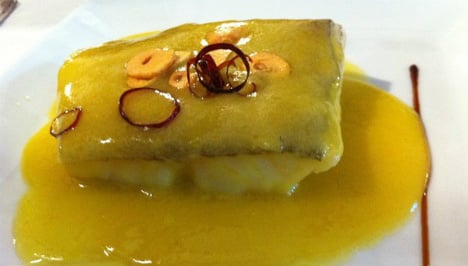
Photo: Mover el Bigote/Flickr
Salt cod is not, despite its name, salty. Preserving the fish in salt gives it a meat-like texture but the taste is (or should be) washed out in the preparation process. Basques are masters of salt-cod cooking: try the classic bacalao al pil pil, served with a garlic and olive oil emulsion.
Cocido (Stewed meat and vegetables)
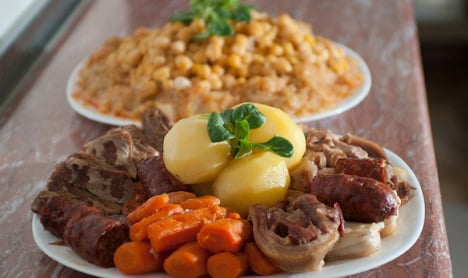
Photo: Salvatore G2/Flickr
Different regions of Spain put their own stamp on this staple by varying the included meats. The Catalan escudella y carn d'olla adds chicken and a type of meatball to the standard pigs' trotters, ears, belly pork, blood sausages and beef, often served over two courses. It sounds unappealing but there are few better belly-busting dishes to get you through a cold winter's day.
Pimientos de Piquillo
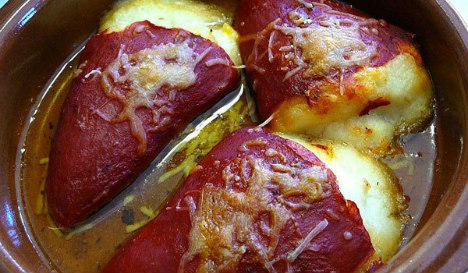
Photo: Juan Mejuto/Wikimedia
The farmers of Navarre are perhaps the most green-fingered in Spain and the region is well-known for its excellent vegetable dishes. Sweet red piquillo peppers from Lodosa even have D.O (Denominación de Origen) status and are commonly served stuffed with a creamy salt-cod brandade.
Polbo á Feira
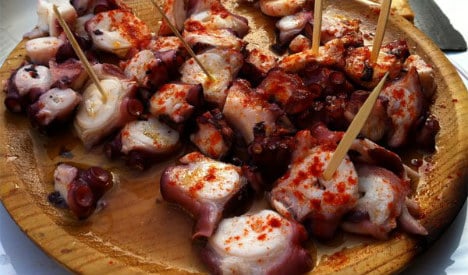
Photo: Olonnais/Wikimedia
Sometimes seen on menus in Spanish as polbo a feira, this Galician dish of sliced tentacles does not always appeal to the unwary. You'd be a sucker not to try it though: despite its rubbery reputation, well-cooked Galician octopus sprinkled with paprika and sea salt is tender and delicious.
Callos a la Madrileña (Madrid-style tripe)
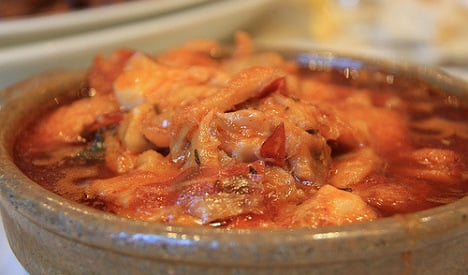
Photo: Javier Lastras/Flickr
Many tourists retch at the thought of eating tripe but in-the-know locals happily tuck into this spicy delicacy, which combines the unctuous softness of the offal with paprika, tender beef cheek and chorizo.
Mojama
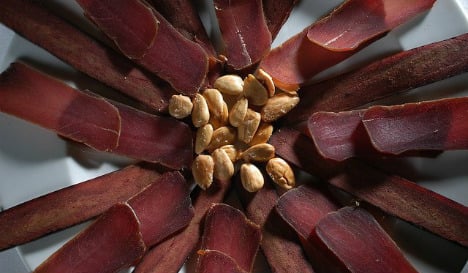
Photo: Santa Pola/Flickr
Andalusians have continued the Arab tradition of curing fresh tuna in the hot, dry air of Spain's southwest coast for generations. The result, mojama, may look like a dog chew from a pet shop but is actually wonderful when sliced very thinly and marinated in olive oil. Try some with almonds and a glass of manzanilla sherry.
By Steve Tallantyre
Comments
See Also
Percebes

Photo: Fotero/Flickr
Barnacle collectors in Galicia brave the crashing waves of the Atlantic in winter months and risk their lives to pick these alien-looking crustaceans from the rocks. They're hard to harvest, outrageously expensive (sometimes almost €300 ($374) per kilo), incredibly ugly... and unbelievably delicious.
Calçots

Photo: Joan Grifols/Flickr
Eating onions may not sound exotic but the Catalan calçotada feast is a unique food experience. The sweet onions are first grilled over flames, stripped of their charred outer layers and dipped into salbitxada, a rich variety of romesco sauce with nuts, peppers, garlic and tomatoes. You'll need a plastic bib and a big appetite to get through this messy, unmissable meal.
Coques de llardons (Pork and sugar flatbreads)

Photo: Slastic/Wikimedia
Meat and sugar? This unlikely combination is a traditional favourite in Catalonia and once you try it you'll be a believer too. Crispy flatbreads are topped with pine nuts and fried cubes of pork fat or crackling then sprinkled with sugar to make a high-calorie but mouth-watering combination.
Cochinillo

Photo: LWYang/Flickr
The sight of dead baby pigs (from two - to six -weeks old) in market stalls or rotating on spits in Castille-Leon has turned more than one person to vegetarianism but the taste of the finished dish is a meaty treat of tender flesh and perfect, crispy skin flavoured with smoke from traditional wood-fired ovens.
Bacalao (Salt cod)

Photo: Mover el Bigote/Flickr
Salt cod is not, despite its name, salty. Preserving the fish in salt gives it a meat-like texture but the taste is (or should be) washed out in the preparation process. Basques are masters of salt-cod cooking: try the classic bacalao al pil pil, served with a garlic and olive oil emulsion.
Cocido (Stewed meat and vegetables)

Photo: Salvatore G2/Flickr
Different regions of Spain put their own stamp on this staple by varying the included meats. The Catalan escudella y carn d'olla adds chicken and a type of meatball to the standard pigs' trotters, ears, belly pork, blood sausages and beef, often served over two courses. It sounds unappealing but there are few better belly-busting dishes to get you through a cold winter's day.
Pimientos de Piquillo

Photo: Juan Mejuto/Wikimedia
The farmers of Navarre are perhaps the most green-fingered in Spain and the region is well-known for its excellent vegetable dishes. Sweet red piquillo peppers from Lodosa even have D.O (Denominación de Origen) status and are commonly served stuffed with a creamy salt-cod brandade.
Polbo á Feira

Photo: Olonnais/Wikimedia
Sometimes seen on menus in Spanish as polbo a feira, this Galician dish of sliced tentacles does not always appeal to the unwary. You'd be a sucker not to try it though: despite its rubbery reputation, well-cooked Galician octopus sprinkled with paprika and sea salt is tender and delicious.
Callos a la Madrileña (Madrid-style tripe)

Photo: Javier Lastras/Flickr
Many tourists retch at the thought of eating tripe but in-the-know locals happily tuck into this spicy delicacy, which combines the unctuous softness of the offal with paprika, tender beef cheek and chorizo.
Mojama

Photo: Santa Pola/Flickr
Andalusians have continued the Arab tradition of curing fresh tuna in the hot, dry air of Spain's southwest coast for generations. The result, mojama, may look like a dog chew from a pet shop but is actually wonderful when sliced very thinly and marinated in olive oil. Try some with almonds and a glass of manzanilla sherry.
By Steve Tallantyre
Join the conversation in our comments section below. Share your own views and experience and if you have a question or suggestion for our journalists then email us at [email protected].
Please keep comments civil, constructive and on topic – and make sure to read our terms of use before getting involved.
Please log in here to leave a comment.